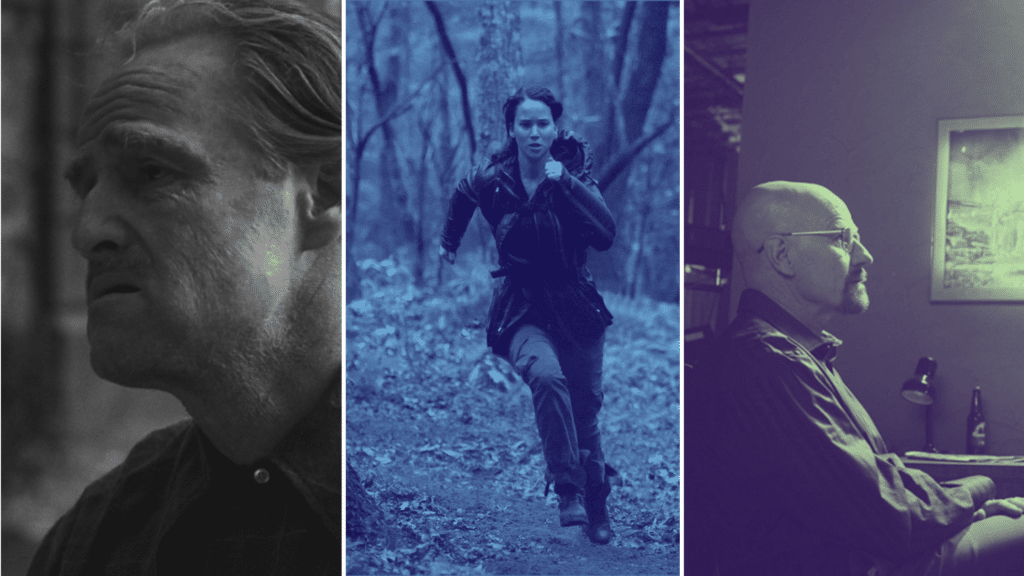
Introduction
We’re continuing our drama blogs this week with everything you need to know about conflict!
Conflict is the beating heart of our stories, the spark that ignites the narrative and propels characters forwards, keeping us on the edge of our seats.
Whether you’re writing a piece of prose, a play or a screenplay, conflict is at the core. Without conflict, we wouldn’t have a story. But how do we effectively build tension and maintain balance between conflict and its resolution?
In today’s blog, we’ll explore why conflict is essential is drama, break down the different types of conflict you can use in your stories, and how some of the most successful movies and TV shows have smashed conflict and given us some of the most memorable moments in history. So, let’s dive in and get started!
Why is Conflict Essential in Drama?
Drama is all about change. Characters need to evolve, relationships need to transform, with the story world often seeming different by the end of the story.
Conflict forces all the story elements to change by providing obstacles that stand between the protagonist and their goal. These obstacles make the protagonist grow, make decisions and face their flaws. If we didn’t have these obstacles in our stories, our narratives could become stale and unable to truly engage an audience.
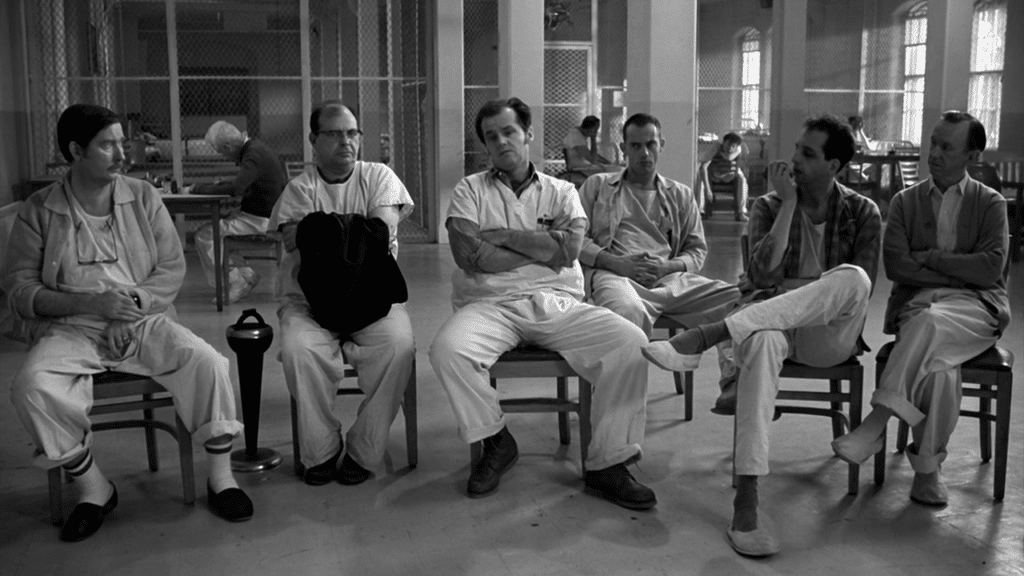
Engagement Through Tension
As we add conflict to our stories, we create tension to keep our audiences invested and guessing what could happen next. Think about when you watch your favorite movie or TV show – what keeps you watching? Which ones always keep you guessing? What moments trigger the ‘lean forward’ in your seat?
It’s these movies and shows whose screenplays have the highest of stakes, allowing us to emotionally invest and pull us deeper into the story.
Character Development
Conflict is the driving force behind our characters in confronting their flaws, desires and values. It’s how they react to the conflict, whether that’s to fight it, run from it or to compromise with it, that uncovers key parts of their personality.
By overcoming the conflict (or not!), a character can see a huge amount of growth, maintaining the audience’s attention and emotional connection. Well-crafted conflict helps us as writers to shape our character arcs effectively!
Driving the Plot
While conflict is the central problem in the narrative, it also forces us towards its own resolution. Without the conflict in the first place, we cannot have any plot progression and eventual resolution. This could be anything from a happy conclusion, a tragic conclusion or something a little more open to interpretation.
Try Celtx Beat Sheets to map out every twist in turn in your drama
Types of Conflict in Drama
Conflict can take on many different forms in our stories depending on the nature of the narrative and its characters. Let’s explore the three most common types of conflict found in drama. We’ll even throw in some prime examples of each from popular movies and television!
Character vs. Self
This type of conflict centers on the internal struggles of the protagonist who faces an emotional or psychological challenge. Such struggles force them to question their beliefs, wants, needs, or even their identity.
Internal conflict like this can be just as engaging as any external battle our characters face because it taps directly into the human experience that we all have. We all suffer self-doubt, face moral dilemmas and encounter conflicting desires in our lives, which helps us engage in the stories we know and love.
Internal conflict is great to use when you want to explore complex characters and their deep psychological struggles. If your protagonist’s journey involves self-discovery or a stark transformation that evokes a powerful sense of empathy in your audience, internal conflict is also an ideal choice.
Walter White and his internal conflict in Breaking Bad (2008-2013) are central to the story. As Walter struggles with his identity as a mild-mannered chemistry teacher who morphs into the ruthless drug lord Heisenberg. Walter’s internal battle is a constant theme throughout the series as he grapples with his motivations, works to justify his increasingly shocking actions, and reconciles with the consequences. It’s this conflict that drives Breaking Bad’s overarching narrative – without it, it wouldn’t be as compelling and dynamic a series as it’s become!
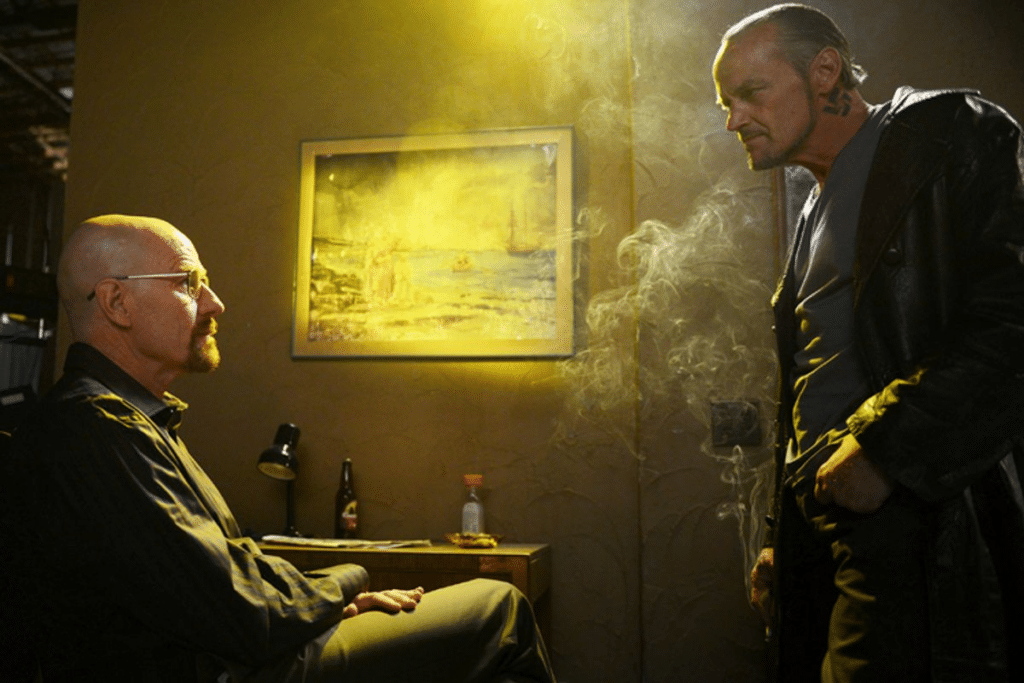
Check out this clip from season 1, episode 6, early in Walter’s journey. Jesse is late to cook up their latest batch of drugs. We begin to see Walter’s gritty determination in how he confronts Jesse, however we continue to see his internal struggle of chemistry teacher vs fledgling drug lord.
Character vs. Character
This conflict does exactly what it says on the tin – a direct confrontation between two or more characters with opposing goals, desires and values. It’s this clash that causes the most dramatic tension as it usually involves personal stakes, power struggles or ideological differences.
Character vs. Character can create the most compelling dynamics, especially when the characters are equally matched in their rivalry, or if their actions lead to irreversible consequences.
This type of conflict is perfect if you’re looking to explore a rivalry, love triangle, or ideological battle where the relationship between characters is central to the plot. Or, if you have a captivating antagonist in mind who directly opposes the protagonist, there’s so much to explore.
The conflict between Michael Corleone and his enemies, including those in his own family, in The Godfather, is the key driver of the movie’s plot. The ongoing power struggle between Michael and those who look to destroy his family’s standing exemplifies the overarching external conflict between the wider Corleone family and other mafia factions.
Struggling to format your script? Fuhgeddaboutit. Celtx has you covered.
Try it for free today.
Character vs. Character isn’t the only form of conflict in The Godfather but rather runs alongside Michael’s internal battle to maintain his humanity. It’s common for external and internal conflict to coexist in a story, making for a multi-layered and ultimately more appealing narrative.
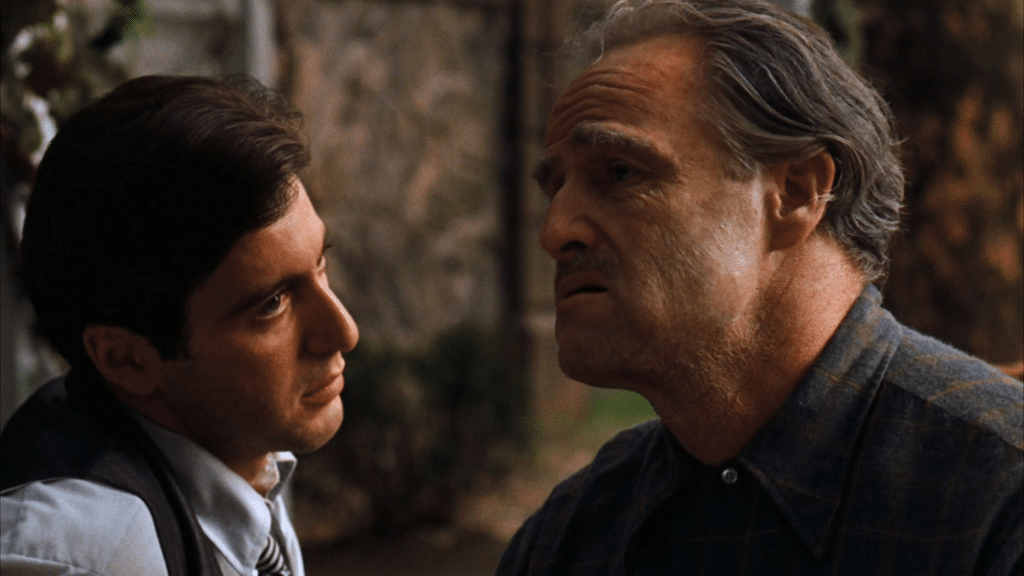
In this clip from the movie, Michael confronts rival mobster and casino owner Mo Greene about beating up his older brother Fredo, it’s not just Mo he has to contend with, but backlash from his own family. At this point in the story, Michael is the fully fledged head of the family but is experiencing conflict from both his enemies and allies.
Character vs. Society
Rather than being one person or a small set of people, here the conflict arises from a protagonist or a group of protagonists facing an opposing external societal force or structure. This could be anything from a corrupt institution, societal norms, or an oppressive system.
If you go for character vs. Society, it can be a powerful form of conflict as it taps into larger themes such as justice, morality, and the protagonist’s role within society.
Character vs. Society is ideal for you if you want to explore themes of social change, rebellion or individual rights or write a script that critiques societal norms, power and political structures. If your protagonist is fighting for something bigger than themselves, this type of conflict is definitely for you!
In The Hunger Games (2012), Katniss Everdeen’s conflict with the Capitol represents a Character vs. Society conflict on a grand scale. She’s forced to compete in a brutal, televised fight to the death, a dystopian tradition designed to suppress rebellion and keep control over the districts.
Katniss’ struggle is not just against her fellow tributes, but against a corrupt society that has oppressed and exploited its citizens.
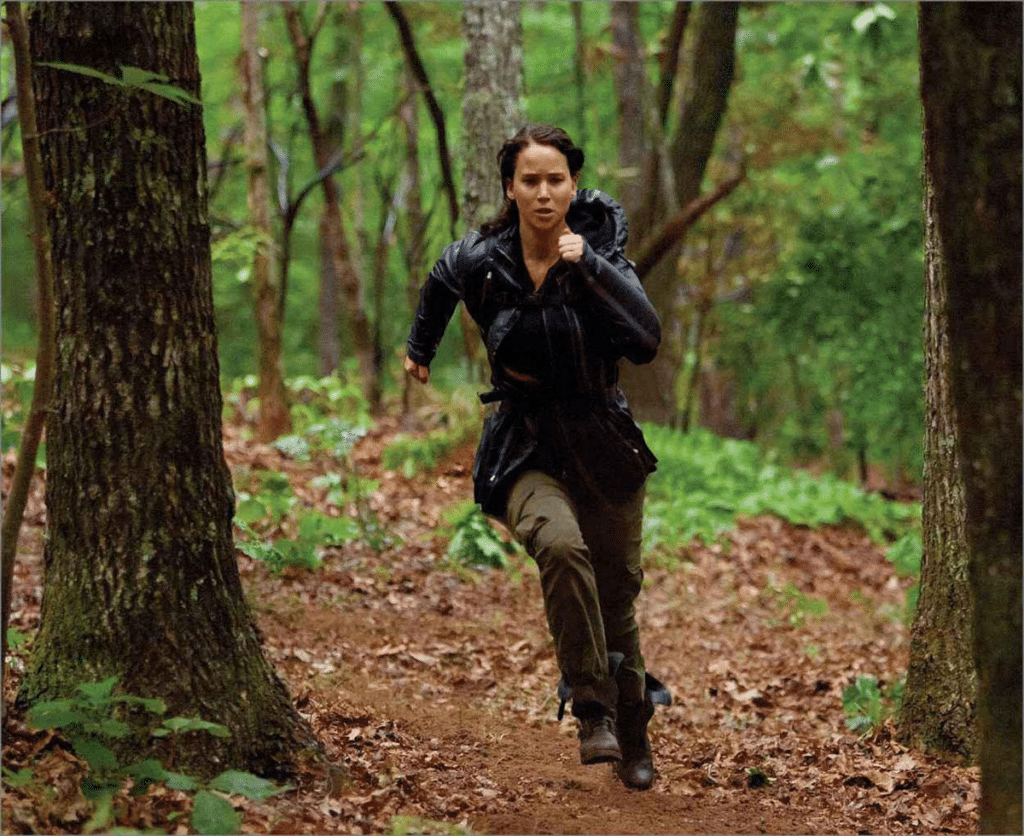
In this tense early scene from the movie, Haymitch Abernathy, the only living victor of the Hunger Games from District 12, gives Katniss and Peter advice on staying alive. While this is a heated exchange between Haymitch and Katniss, it highlights the conditions of the society they’re living in and what Katniss is up against in her battle.
We volunteer as tribute!
Let Celtx help you write the next great dramatic story
Building Tension and Pacing Resolutions
Let’s see how we can build tension and pave the way to resolutions in our own writing through conflict. Here are some techniques to help you do just that.
Building Tension
Tension comes from conflict but also relies on how that conflict is gradually escalated. By raising the stakes, creating suspense and introducing complications along the way can make the resolution feel earned and satisfying for our audience.
First, let’s raise the stakes and make the consequences of the protagonist failing to reach their goal more significant. The more they stand to lose, the more tension is generated by the conflict.
Introduce new obstacles and twists throughout the story to make your resolution seem increasingly difficult to reach. We recommend you know the resolution before you start writing so you can weave twists and turns along the way.
You could also add time constraints to heighten the tension. This urgency forces your characters to act quickly which can result in more emotional and dramatic moments.
Alongside time pressure, you could build on this with a moral dilemma. When a character is forced to choose between two equally undesirable options, it adds complexity to the conflict and engages the audience on a deeper level.
Slow-Burn vs. Quick Resolution
As you reach the moment of resolution in your story, you should consider the pacing. Some stories benefit from a slow-burn resolution, where tension builds gradually with smaller resolutions and setbacks along the way.
Slow-burn tension is more commonly used in psychological dramas, thrillers or narratives where the focus is set on character development. Shows like Breaking Bad where protagonist Walter While’s gradual descent into the criminal underworld and internal conflict unfold over several seasons. With a slower building of tension, the eventual confrontations at the end of the show’s run are even more powerful!
Alternatively, other narratives work best with a more immediate resolution where the stakes are rapidly raised with a quick, dramatic climax. Quick resolutions are used when the conflict is intense but short-lived. Fast-paced action or thriller movies may use these to keep the energy high with a consistent sense of urgency.
Tips for Balancing Conflict and Resolution
We’re not going to pretend that balancing conflict with its resolution is an easy feat. A resolution that comes too soon can deflate the tension, while dragging conflict on for too long can frustrate the audience. Here are our top tips to help you navigate the balance.
Set up your stakes early
From the start of your script, make sure the stakes are clear, so the audience understands what’s at risk. This will make your resolution more satisfying.
Related Reading: How to Write a Dramatic Scene || The Writer’s Workshop
Create a sense of inevitability
Your story’s resolution should feel earned, as though the conflict was building towards it. Even if you decide to opt for a quick resolution, avoid an ending that’s unsatisfying for your audience that doesn’t align with your characters’ journeys.
Multiple conflict layers
A mix of internal and external conflict can make all the difference in your larger narrative. Subplots involving secondary character conflict or smaller conflict can add depth and allow for moments of resolution without overshadowing the main conflict.
Escalate, then release
Once your story’s tension has reached its peak, allow for a moment of release for the audience to exhale before the final resolution. This could be in the form of a character’s realization, a vulnerable moment, or an unexpected plot twist. Think of it as the moment before you push yourself down the slide at the play park.
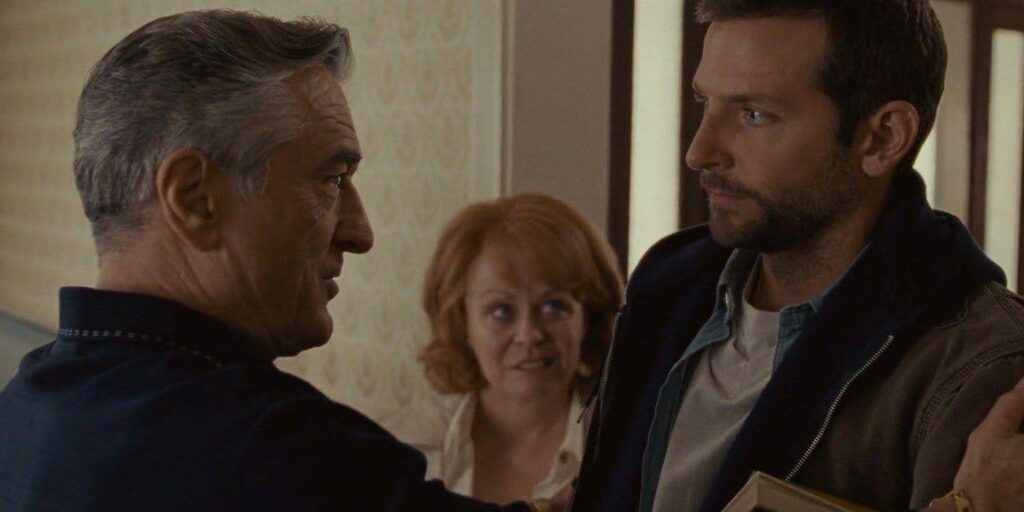
Conclusion
Conflict is the essential ingredient that drives drama, shaping characters, plot, and emotional engagement. By carefully crafting tension and balancing resolution, you can create compelling, dynamic stories that captivate audiences and leave lasting emotional impacts.
Why not check out all the tools we offer with Celtx? Our suite is here to help you with all your screenwriting needs!
Follow us on social media to keep the conversation going:
Loved this article? Try these next:
- From Tears to Triumphs: How to Write a Drama Script
- TV Pilots: Why Some Succeed and Others Don’t
- The Bear, The Batman, and Barbie: Starting Strong in Storytelling

